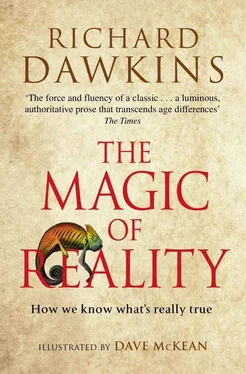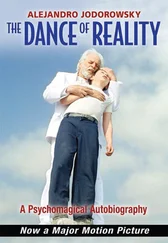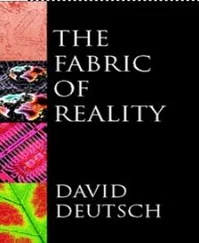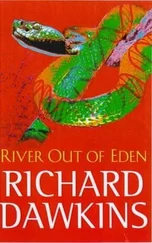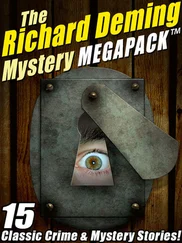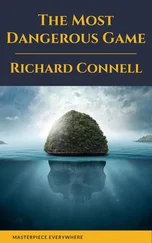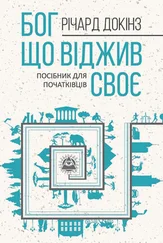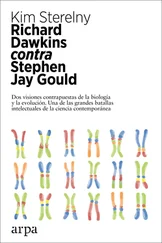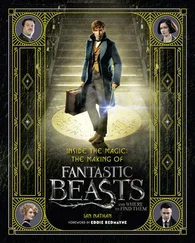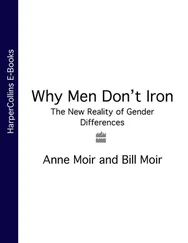Now, how do we know what our distant ancestors looked like, and how do we know when they lived? Mostly from fossils.
Fossils are made of stone. They are stones that have picked up the shapes of dead animals or plants. The great majority of animals die with no hope of turning into a fossil. The trick, if you want to be a fossil, is to get yourself buried in the right kind of mud or silt, the kind that might eventually harden to form ‘sedimentary rock’.
What does that mean? Rocks are of three kinds: igneous, sedimentary and metamorphic. I shall ignore metamorphic rocks, as they were originally one of the other two kinds, igneous or sedimentary, and have been changed by pressure and/or heat. Igneous rocks (from the Latin for ‘fire’, ignis ) were once molten, like the hot lava that comes out of erupting volcanoes now, and solidified into hard rock when they cooled. Hard rocks, of any kind, get worn down (‘eroded’) by wind or water to make smaller rocks, pebbles, sand and dust. Sand or dust gets suspended in water and can then settle in layers of sediment or mud at the bottom of a sea, lake or river. Over a very long time, sediments can harden to make layers (or ‘strata’) of sedimentary rock . Although all strata start off flat and horizontal, they have often got tilted, upended or warped by the time we see them, millions of years later (we will see how this happens in Chapter 10 on earthquakes).
Now, suppose a dead animal happens to get washed into the mud, in an estuary perhaps. If the mud later hardens to become sedimentary rock, the animal’s body may rot away, leaving in the hardening rock a hollow imprint of its form which we eventually find. That is one kind of fossil – a kind of ‘negative’ picture of the animal. Or the hollow imprint may act as a mould into which new sediments fall, later hardening to form a ‘positive’ replica of the outside of the animal’s body. That’s a second kind of fossil. And there’s a third kind of fossil in which the atoms and molecules of the animal’s body are, one by one, replaced by atoms and molecules of minerals from the water, which later crystallize to form rock. This is the best kind of fossil because, with luck, tiny details of the animal’s insides are permanently reproduced, right through the middle of the fossil.
Fossils can even be dated. We can tell how old they are, mostly by measuring radioactive isotopes in the rocks. We’ll learn what isotopes are, and atoms, in Chapter 4. Briefly, a radioactive isotope is a kind of atom which decays into a different kind of atom: for example, one called uranium-238 turns into one called lead-206. Because we know how long this takes to happen, we can think of the isotope as a radioactive clock. Radioactive clocks are rather like the water clocks and candle clocks that people used in the days before pendulum clocks were invented. A tank of water with a hole in the bottom will drain at a measurable rate. If the tank was filled at dawn, you can tell how much of the day has passed by measuring the present level of water. Same with a candle clock. The candle burns at a fixed rate, so you can tell how long it has been burning by measuring how much candle is left. In the case of a uranium-238 clock, we know that it takes 4.5 billion years for half the uranium-238 to decay to lead-206. This is called the ‘half-life’ of uranium-238. So, by measuring how much lead-206 there is in a rock, compared with the amount of uranium-238, you can calculate how long it is since there was no lead-206 and only uranium-238: how long, in other words, since the clock was ‘zeroed’.
And when is the clock zeroed? Well, it only happens with igneous rocks, whose clocks are all zeroed at the moment when the molten rock hardens to become solid. It doesn’t work with sedimentary rock, which has no such ‘zero moment’, and this is a pity because fossils are found only in sedimentary rocks. So we have to find igneous rocks close by sedimentary layers and use them as our clocks. For example, if a fossil is in a sediment with 120-million-year-old igneous rock above it and 130-million-year-old igneous rock below it, you know the fossil dates from somewhere between 120 million and 130 million years ago. That’s how all the dates I mention in this chapter are arrived at. They are all approximate dates, not to be taken as too precise.
Uranium-238 is not the only radioactive isotope we can use as a clock. There are plenty of others, with a wonderfully wide spread of half-lives. For example, carbon-14 has a half-life of only 5,730 years, which makes it useful for archaeologists looking at human history. It is a beautiful fact that many of the different radioactive clocks have overlapping timescales, so we can use them to check up on each other. And they always agree.
The carbon-14 clock works in a different way from the others. It doesn’t involve igneous rocks but uses the remains of living bodies themselves, for example old wood. It is one of the fastest of our radioactive clocks, but 5,730 years is still much longer than a human lifetime, so you might ask how we know it is the half-life of carbon-14, let alone how we know that 4.5 billion years is the half-life of uranium-238! The answer is easy. We don’t have to wait for half of the atoms to decay. We can measure the rate of decay of only a tiny fraction of the atoms, and work out the half-life (quarter-life, hundredth-life, etc.) from that.
Let’s do another thought experiment. Take a few companions and get in a time machine. Fire up the engine and zoom back ten thousand years. Open the door and have a look at the people you meet. If you happen to land in what is now Iraq, they’ll be in the process of inventing agriculture. In most other places they’ll be ‘hunter-gatherers’, moving from place to place, hunting wild animals and gathering wild berries, nuts and roots. You won’t be able to understand what they say and they will be wearing very different clothes (if any). Nevertheless, if you dress them in modern clothes and give them modern haircuts, they will be indistinguishable from modern people (or no more different from some modern people than people are different from one another today). And they will be fully capable of breeding with any of the modern people on board your time machine.
Now, take one volunteer from among them (perhaps your 400-greats-grandfather, because this is approximately the time when he might have lived) and set off again in your time machine, back another ten thousand years: to twenty thousand years ago, where you have a chance to meet your 800-greats-grandparents. This time the people you see will all be hunter-gatherers but, once again, their bodies will be those of fully modern humans and, once again, they will be perfectly capable of interbreeding with modern people and producing fertile offspring. Take one of them with you in the time machine, and set off another ten thousand years into the past. Keep on doing this, hopping back in steps of ten thousand years, at each stop picking up a new passenger and taking him or her back to the past.
The point is that eventually, after a lot of ten-thousand-year hops, perhaps when you’ve gone a million years into the past, you’ll begin to notice that the people you meet when you emerge from the time machine are definitely different from us, and can’t interbreed with the people who boarded with you at the start of its journey. But they will be capable of breeding with the latest additions to the passenger list, who are almost as ancient as they are themselves.
I’m just making the same point as I made before – about gradual change being imperceptible, like the moving hour hand of a watch – but using a different thought experiment. It’s worth saying in two different ways, because it is so important and yet – quite understandably – so hard for some people to appreciate.
Читать дальше
